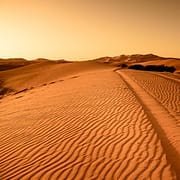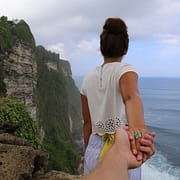
Backpacking Information on South Korea
– Population: 48.2 million (UN, 2005)
– Capital: Seoul
– Area: 99,313 sq km (38,345 sq miles)
– Major language: Korean
– Major religions: Buddhism, Christianity
– Life expectancy: 73 years (men), 80 years (women) (UN)
– Monetary unit: won
This southern half of the Korean peninsula is the world’s window to Korea having maintained affable diplomatic relations with 170 countries in the world. South Korea has been building up a tourism profile that is gradually but outstandingly gaining international fame with the slogan “Sparkling Korea”. A truly dazzling culture, the new “Korea Wave” that flooded Asia is now opening itself to a bigger international audience sharing with the world its trendy and chic pop film and music cultures and cutting edge technology. With a high-tech industrialized economy, South Korea is the home of top electronic and automobile brands like Samsung, LG, Hyundai and Kia earning its spot as the 12th largest economy in the world.
GEOGRAPHY
South Korea lies at 37 00 127 30 E with a total area of 100,032.00 km2 (38,622.57 mi2). The greater part of South Korea’s topography is mountainous, with an ecologically sound 65% of the land area still comprised of forests and woodlands thanks to its afforestation programs. Only a meagre 30% are arable lowlands. The highest point of the region is Halla-san, an extinct volcano in Jeju, at 1,950 metres (6,398 feet), while the Sea of Japan is the lowest point at 0 metres elevation. Seoul is the infamous capital of South Korea. The region currently addresses ecological concerns involving air quality and acid rains, as well as deforestation brought about by rampant industrialization.
CLIMATE
The climate in South Korea can be described as either humid continental climate or humid subtropical climate. Just as it is the North, South Korea experiences harshly cold winters and hot and humid summers. Summers are madly wet with the whole year’s concentration of rainfall on the months of June through September. The average Seoul temperature in January is -2.5°C, and goes a high 29.5°C in August.
PEOPLE
As of March 19, 2010, the U.S. Census Bureau’s International Data Base (IDB) estimates a population of 48,636,000 in South Korea. South Korea is also regarded as an ethnically homogenous population where 99.9% are Koreans and the rest are a small Chinese minority.
CULTURE
The North and South Korea are grounded on the same traditional cultures with heavy Chinese and Japanese influences. The differences arose from how they individually developed apart upon its division in 1945. South Korea’s cultural endeavours are to acknowledge and embrace international influences as part of their modern identity, while North Korea, on the other hand, aims at undoing them.
LANGUAGE
KOREAN (Han-guk) is also the official language of the region, similar to the Korean spoken in the north, with dialect variations so subtle that the language is mutually intelligible. South Korea is also one of the most linguistically homogenous countries in the world with over 48 million speakers. Code-mixing or foreign terms sandwiched in Korean sentences are widely prevalent and use of the Hanja or Chinese writing characters is occasional. South Korea’s writing system is also similar to the North’s and is termed as Hangul. JAPANESE is also widely used in the region.
ENGLISH is the proposed second language taught from preschool to university-level education, but South Korea still feels a need to strengthen English skills through education and other English programs to improve national competitiveness.
RELIGION
South Korea practices multi-religiosity but 50% of the population are undefined religiously, making it an atheist state as the North. Christianity is the most dominant religion with 49% of the aforementioned half practicing it, while Buddhism falls at a not-so-distant 2nd with 47%. Other minor religions are Shamanism, Confucianism, and the traditional Chondogyo (Heavenly Way).
ATTRACTIONS
The tourism industry of South Korea holds so much to boast with 8 UNESCO Cultural Heritage Sites, 20 national parks, eco-parks such as the Bosong Tea Field and Suncheon Bay Eco Park inSouth Jeolla, numerous cities of unique interest and feature like bustling Busan or ancient Gyeongju, and natural wonders and treasures that run countless. The UNESCO World Heritage Sites lists as:
In 1995
1. Seokguram Grotto
2. Bulguksa Temple
3. Haeinsa Janggyeong Panjeon4. Jongmyo Shrine
In 1997
5. Changdeokgung Palace Complex
6. Suwon Hwaseong Fortess
In 2000
7. Gyeongju Historic Areas
8. Gochang, Hwasun, and Ganghwa Dolmen Sites
Amid all this, South Korea sure has a treat for backpackers with its fascinating countryside on the road less travelled that is more than certain shy of tourist crowds. If there be a mighty suggestion, be the first to explore what has not been, because there definitely is something to uncover. Of course, the Ecorium Project by the National Ecological Institute is no secret, but is a MUST LOOK OUT FOR…
FOOD
The full delight of a typical South Korean meal or pekpan can be achieved with rice (a staple), soup, meat, vegetables, and a variety of side dishes, of which, you’d surely expect kimchi. The side dishes on every meal is explained by the simple principle of “harmony and balance,” eating and spicing up as is personally required to achieve overall satisfaction. The Cholla-do area is famous for a number of dishes, while the crowd favorite remains to be BULGOGI.
For more valuable travel information on backpacking and various destinations throughout the world please visit http://www.backpackingaddictz.com



